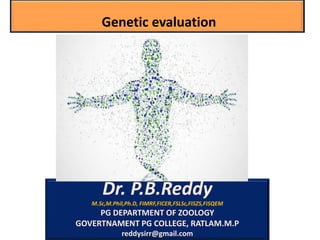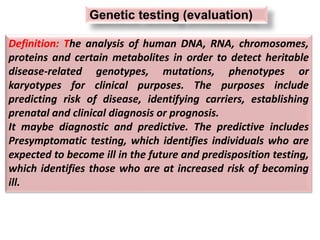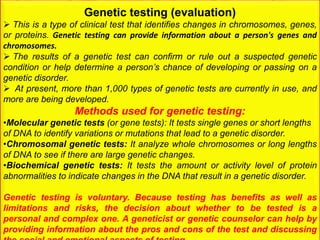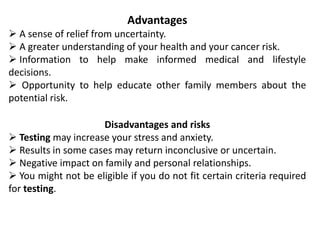Genetic testing (evaluation) analyzes human DNA, RNA, chromosomes, proteins and certain metabolites to detect heritable diseases, mutations, phenotypes or karyotypes. It can be used for diagnostic, predictive, presymptomatic or carrier testing purposes. There are several types of genetic tests including newborn screening, diagnostic testing, carrier testing, prenatal testing, preimplantation testing, predictive/presymptomatic testing and forensic testing. Genetic testing involves analyzing samples like blood or tissue to identify changes in genes or chromosomes. While it provides information to guide healthcare decisions, genetic testing also involves risks like inconclusive results or impact on relationships.













